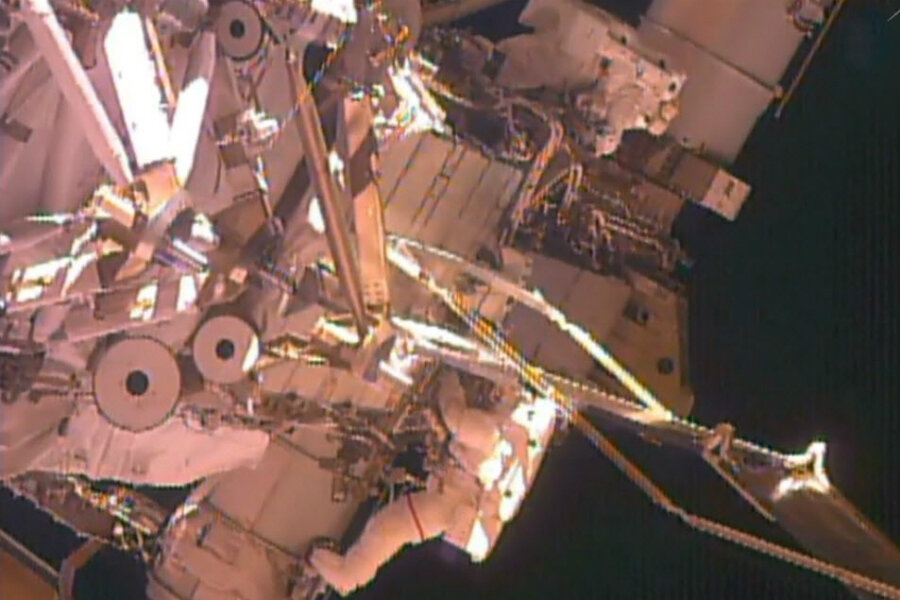What does it take to keep a space station running?
Loading...
On Thursday, NASA astronauts Jeff Williams and Kate Rubins completed their second spacewalk in as many weeks, installing new external components on the International Space Station (ISS) and conducting maintenance on existing ones.
The mission marked Mr. Williams’ fifth spacewalk, and Ms. Rubins’ second. When Williams, commander of Expedition 48, returns to Earth, he will have spent 534 days in orbit over four missions – a US record for space endurance. Last week, Ms. Rubins became the first person ever to sequence DNA in space.
But it takes a lot to keep a space station running, and this mission was more about upkeep than personal (or national) bests.
The two astronauts were tasked with retracting a 44-foot-long thermal radiator on the outside of ISS. Williams folded the panel with a power tool as Rubins floated nearby as a spotter. The radiator was originally extended in an effort to stop a coolant leak in 2012. A different team attempted the radiator retraction after the leak was discovered elsewhere on the station, but were unsuccessful.
“The reason why we’re retracting this radiator is it’s not in use anymore, it’s fully extended and kind of exposed to the external environment and susceptible to any orbital debris or damage that may come its way,” flight director Zeb Scoville told CBS. “It’s one of our high priority spares, we really want to be able to get it retracted and covered up so we can count on it in the future should the need arise.”
Having completed their primary objective, Williams and Rubins tightened struts on a solar array joint and installed a high-definition television camera on the station’s exterior. The camera will provide HD imagery of the Soyuz vehicles that crewmembers use to return to Earth, allowing for better safety inspection.
“There’s going to be some great opportunities for Earth observation as well as inspections of the rest of station,” Mr. Scoville said. “I’m really expecting to see some just fantastic imagery coming out of these cameras.”
Williams and Rubins were later informed of an explosion at Cape Canaveral just an hour into the spacewalk. At that time, SpaceX was conducting a test launch of its uncrewed Falcon rocket. The explosion did not cause any injuries, according to a spokesperson for the aerospace company. The rocket was slated to take off on Saturday with an Israeli satellite, as part of a communications experiment spearheaded by Facebook.
The two US astronauts installed a new docking port on a previous spacewalk, Aug. 19.








